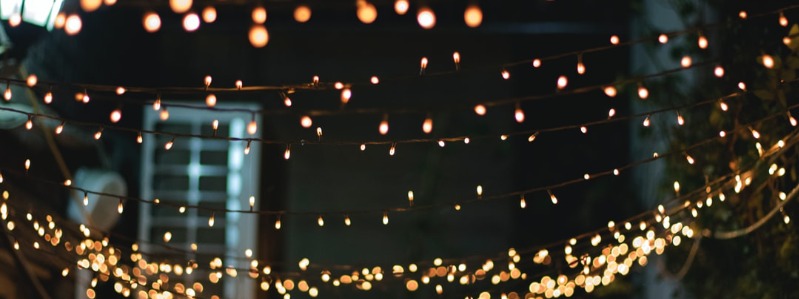After sundown, outdoor lights can make your yard safer while transforming the landscape into a magical new world. Strategically placed lights can transcend yards and gardens, illuminating your landscape’s best features while keeping the bad ones in the dark.
In this Remodeling Cost Guide article, readers will learn more about outdoor lighting for their yards and gardens, which is a popular outdoor remodeling project . You will obtain the necessary skills to choose between the various type of outdoor lights and acquire information on planning, placement, and installation costs involved in the project.
What’s the plan?
If you’re thinking about adding Outdoor Lighting for Yards and Gardens, the first step is to go outside after dark and think about what you see, don’t see, or would like to see. Make a note of problem areas that seem unsafe, as well as attractive areas that are lost in the shadows. Think about what you want your outdoor lighting to do, like illuminate the area around your hot tub or light up that dark driveway. Make a few sketches on paper then spend an evening experimenting with flashlights to determine the best possible way to bring your landscape to life.
Lighting and Placement
Mounted lighting can beatify your yard in several ways. For example a bullet light mounted high up in a tree and pointed downward will bathe the ground below in a soft light and cast shadows through the tree’s limbs. Also called artificial moonlight, this type of lighting results in a soft glow that is never harsh or glaring.
Low-area lights are used to illuminate walkways or steps. Shrubs with large, glossy leaves such as ivy are particularly useful for keeping fixtures out of view without blocking the lamp’s light. It’s best to position the lights as close as possible to steps and walks to help ensure safe footing.
Spotlights are used to uplight or draw your attention to special features such as statues, interesting stonework, or fountains. If your garden includes a pond, uplighting a nearby tree or plant can make it reflect on the water’s surface. Wherever it is used, uplighting creates drama!
Floodlights can be mounted on the eaves, decks, or doorways of homes and are mainly used to insure safety. The best practice is to identify problem areas where darkness can create an unsafe area. Many floodlights are equipped with motion-sensors that turn themselves on when there is any activity within their sensor range—whether from your dog, a burglar, or a wayward raccoon. These lights are perfect as security lights, but can be bothersome in areas better suited with subdued lighting.
Lanterns are a more ornamental type of light. They are perfect for entertaining guests at a backyard barbecue or small wedding reception. They range from traditional Japanese lanterns to outrageous plastic fruit. Miniature white lights placed in nearby trees or scrubs can also add to the ambiance.
Solar lights are cost-effective and practical if you need light in a place where burying electrical wire isn’t practical. The batteries in solar light are recharged by sunlight and gathered in small collector panels. These lights work well amongst shrubbery or garden paths.
Installation
If you’re the do-it-yourself type it’s best to choose a low-voltage system that uses 12 volt lamps and wire. These systems are generally available in kits that include step-by-step installation instructions. Most basic low voltage lighting costs around $4 to $20 per light. For more complex systems or jobs near water, it’s best to consult the expertise of a licensed electrician. A good electrician can run anywhere from $75-$200 per hour depending on the size and difficulty of the job. Regardless of whether you plan to stay at your residence for several years or several months, new lighting will increase your curb appeal and resale value as well!

